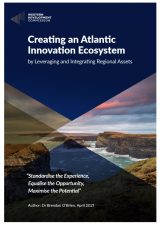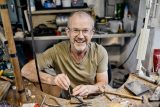The Atlantic Innovation Region (AIRe) is intended to create areas of local competitive advantage for the West of Ireland and deliver a sustainable pipeline of investments to the WDC Investment Fund. This project contributes to the development of a Smart Region by creating a living lab that enables the region to act as a testbed in the areas of data and sensors, connected health and cleantech. AIRe underpins a viable ecosystem of innovative start-ups across the entire western region. Working with partners such as NUI Galway, The Atlantic Technological University, Local Authorities and Industry partners, the WDC is working to orchestrate collaborations across the region and make them available to start-ups and SMEs to facilitate innovation. AIRe is underpinned by a network of more than 100 Enterprise Hubs along the Atlantic Economic Corridor from Donegal to Kerry. These hubs are a direct connection to communities of sole traders, SMEs, entrepreneurs and individuals within bigger organisations that can form a network of innovation along the Western Seaboard.

Read the full report:
An analysis of the future of industry suggests that industries that will continue to grow include transport (with a focus on autonomous and electric vehicles), IoT, renewable energy, digital services, creative, health, and food. However, the core competencies in these industries will become technology-focused, with sensors, data, artificial intelligence and regulation becoming central to success. Future disruption is likely to be exogenous as IT converges with existing industries to disrupt them fundamentally. The WDC aspires for the western region to be at the heart of this disruptive convergence of IT and traditional industry and to shape it so that it contributes to the region’s sustainability.



